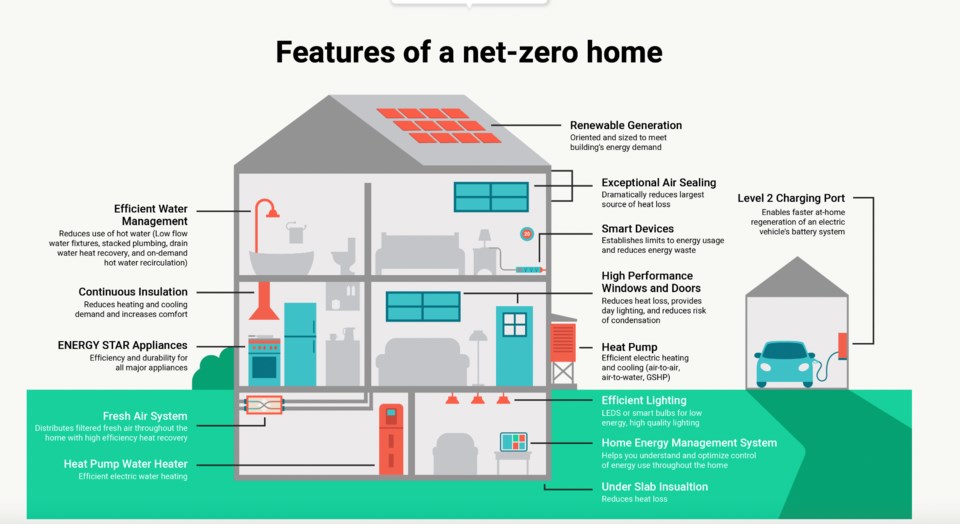A federal government plan to reduce greenhouse gas emissions from Canadian homes to zero within eight years would cost up to $6.3 billion annually and require the refrofitting of more than 500,000 homes every year, according to a startling new study.
“Federal targets for reducing greenhouse gas emissions from Canadian homes face major challenges,” says the new report from the C.D. Howe Institute.
In Only Hot Air? The Implications of Replacing Gas and Oil in Canadian Homes, authors Charles DeLand and Alexander Vanderhoof provide a reality check on Ottawa’s plan to bring down 2030 building emissions in Canada by 42 percent compared to 2019, with the entire economy producing net-zero emissions by 2050.
Canadian homes emit about 6 percent of Canada’s total greenhouse gas (GHG) emissions. Under the federal government’s 2030 Emissions Reduction Plan (ERP), residential emissions should fall from about 44 MT (megatonnes) in 2019 to 25 MT in 2030, note the authors.
To assess the target, the authors examined current sources of emissions from Canadian homes and present a scenario in which homes using gas or oil to heat air and water are retrofitted with electrical heat pumps.
“Our modelling finds that Canada would need to retrofit over 400,000 dwellings per year to fully electrify all dwellings by 2050 and meeting 2030 targets requires even more aggressive action: over half a million retrofits would be required per year,” said DeLand, C.D. Howe Institute associate director, research. “Even in an extreme scenario where no new emitting buildings came on the market after 2022, emissions only fall by about 26 percent to 2030, still not enough to meet government targets.”
To further put the federal government’s 2030 targets into perspective, the number of retrofits needed each year alone is more than the entire housing stock of Saskatchewan, according to the authors.
DeLand and Vanderhoof determine that to meet the 2030 reduction target of 42 percent, not only would no zero new emitting homes need to be built after 2022, but the annual rate of retrofits would need to rise to 516,000 per year.
On a Canada-wide basis, they find that meeting the 2050 target will cost between $4.5 billion to $6.3 billion per year, roughly equivalent to two or three modern hospitals. On a cumulative basis from 2018 to 2050, this represents a total of $143 billion to $203 billion (in 2022 dollars).
“Numbers like these show that other emissions-reducing measures will have to bear more of the burden,” says DeLand. “These include energy efficiency improvements to homes, building code revisions, and combining heat pumps with traditional natural gas furnaces.”
The goal of a net-zero residential buildings sector is ambitious and won’t be cheap, concludes DeLand. “Federal and provincial governments need to acknowledge and understand the very real costs and trade-offs needed to achieve their ambitions with minimum harm to Canadians.”

